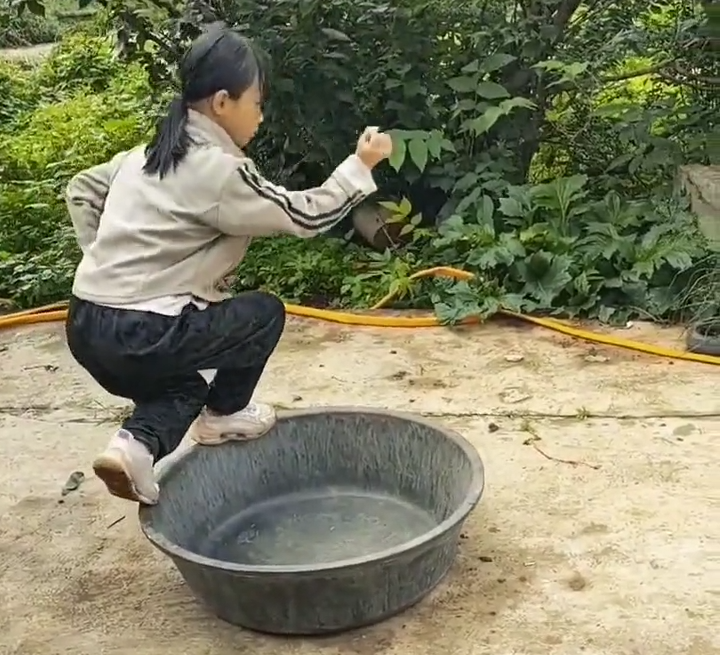The Birth of a System: Xu Aishi and the Qing Dynasty Crucible
While precise historical records of early Ziranmen are scarce, consistent oral tradition places its formalization with Xu Aishi towards the end of the Qing Dynasty. This was a period ripe for martial innovation. China faced internal rebellion, external pressures, and the decline of imperial power. The martial arts world was both vibrant and competitive, with practitioners seeking effective methods for self-defense, bodyguarding, and personal cultivation.
Xu Aishi , often described as diminutive in stature but immense in skill and wisdom, reportedly synthesized his profound understanding of Daoist principles, internal energy cultivation (Qigong), and practical combat into the Ziranmen system. The name itself, "Ziran," reflects the core philosophy. "Zi" (自) means self, and "Ran" (然) means so, thus, or natural state. Together, they signify spontaneity, effortlessness, and alignment with the natural order – acting without forcing, responding appropriately like water flowing around obstacles, embodying the principle of "Wu Wei" (无为 - non-action, or action without striving).
Xu Aishi sought not just to create another fighting style, but a holistic discipline integrating physical training, energy development, mental focus, and moral character. The system was designed to be efficient, stripping away the superfluous to focus on developing core attributes: internal power (Neijin), lightfootedness (Qinggong), acute sensitivity, and spontaneous, effective reaction (Ziran Fa) . Its methods were often unconventional, prioritizing deep, internal transformation over external display. This rigorous and demanding approach required an exceptional student to fully realize its potential. That student would be Du Xinwu .
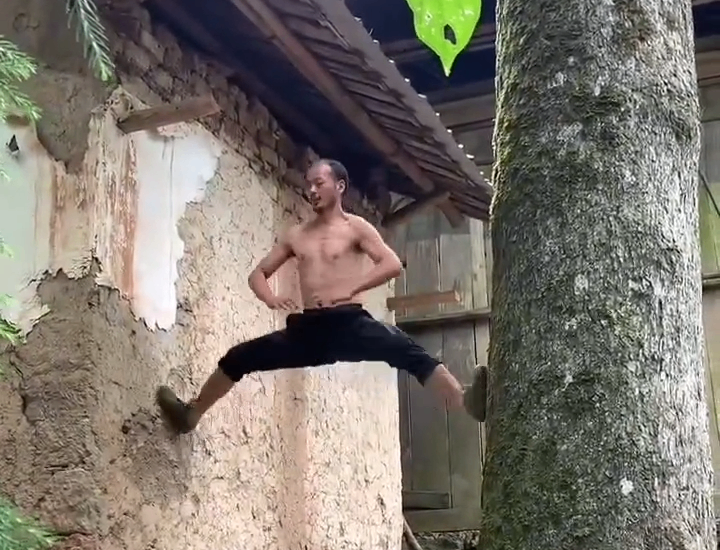
Du Xinwu: The "South-North Great Hero" and His Three-Year Trial
Du Xinwu (杜心五) stands as the most iconic figure in Ziranmen history, the living testament to its effectiveness. Accounts describe him as fiercely intelligent, patriotic, and possessing an indomitable spirit. Drawn to martial arts from a young age, he traveled extensively seeking worthy masters before finding Xu Aishi.
Recognizing Du Xinwu's potential and unwavering determination, Xu Aishi presented him with the gateway to Ziranmen: the Neiquanshou Zouquan (Internal Circle Hand Walking Circle). This seemingly simple exercise – continuously walking in tight circles while maintaining specific postures, hand positions, and breathing patterns – became Du Xinwu's sole focus for three long years .
The Crucible: Neiquanshou Zouquan Deep Dive
What is this foundational practice that demanded such prolonged, exclusive dedication?
The Physical Aspect: Practitioners walk endlessly in a small circle (often only a few feet in diameter), maintaining a low stance (such as a deep "Santi Shi" or "Dragon-Tiger stance" variant). The arms are held in specific positions – often one arm extended in front at chest height, palm facing inwards or down, acting as the "gate," while the other arm is held near the dantian (lower abdomen), the energy center. The spine is straightened, the pelvis tucked, the gaze focused but soft. Steps are deliberate, smooth, and connected, maintaining constant, even pressure through the feet.
The Internal Aspect (Qigong/Neigong): This is the heart of the practice. Deep, abdominal breathing (often reverse breathing) is synchronized with the steps. Intent (Yi ) is directed internally, focusing on:
Circulating Qi: Guiding the vital energy along specific pathways, particularly the Microcosmic Orbit (Ren and Du meridians), building and storing energy in the dantian. The circular walking physically embodies the cyclical nature of Qi.
Sinking Qi: Developing "heavy" energy (Chen Jin ) – rooting the body firmly to the earth, making it immovable like a mountain.
Lightening the Body: Simultaneously cultivating "light" energy (Qing Jin ) – the foundation for agility and swift footwork (Qinggong).
Sensory Acuity: Developing heightened awareness and sensitivity (Ting Jin ) – listening to one's own body, the environment, and eventually, an opponent's energy and intent.
The Mental Aspect: The monotony and physical challenge demand immense mental discipline. The practitioner cultivates unwavering focus (Ding ), quieting the "monkey mind." Patience, perseverance, and the ability to endure discomfort are forged. It's a moving meditation, training the mind to remain calm, present, and undistracted under prolonged stress – a vital combat skill.
The Alchemy: Neiquanshou is described as a crucible where these elements – physical structure, breath, intent, Qi, and mind – are fused. It's not merely an exercise; it's a transformative process. By concentrating solely on this fundamental practice for years, the practitioner undergoes a profound internal restructuring. Layers of tension, blockages (physical and energetic), and inefficient movement patterns dissolve. The nervous system is rewired. Core strength, balance, coordination, and internal power are built from the ground up. It literally rewires the practitioner's being for martial effectiveness.
Du Xinwu's Three Years: Legend says Xu Aishi observed Du Xinwu relentlessly. Only after three years of unwavering dedication, when Du Xinwu's circle walking exhibited flawless structure, effortless power, deep rooting, fluid energy flow, and an unshakeable spirit, did Xu Aishi deem him worthy. He passed the "examination" (kaoshi hege ), proving his commitment and foundational readiness. Xu Aishi then accepted him as a closed-door disciple (Shoumen Dizi) , granting him access to the deeper secrets and advanced techniques of Ziranmen.
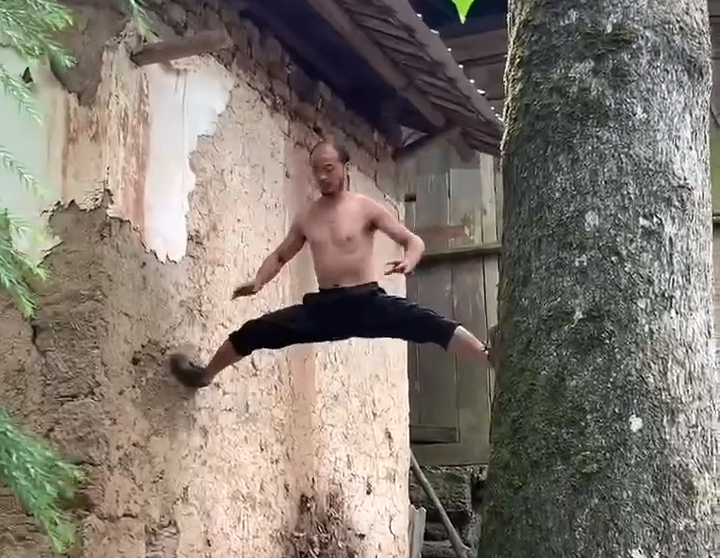
The Fruits of Discipline: Du Xinwu's Mastery and the Essence of Ziranmen
Under Xu Aishi's guidance and building upon the unparalleled foundation of his three-year circle walking, Du Xinwu's skills ascended to legendary heights. His mastery exemplified the core principles promised by deep Neiquanshou practice:
"Shen Ru Tanhuang" (身如弹簧 - Body Like a Spring): The deep internal power cultivated allowed Du Xinwu to absorb and release force with incredible elasticity. Strikes seemingly bounced off him, or were absorbed and instantly returned with devastating effect. His structure, forged in the circle, became incredibly resilient yet dynamically responsive.
"Ti Ru Guo Dian" (体如裹电 - Body Wrapped in Electricity): The intense Qi circulation and heightened sensitivity made his touch potent. Opponents described contact as feeling like an electric shock or being enveloped in an energetic field. His movements crackled with internal power (Fa Jin ) that could be projected explosively.
"Zhou Shen Ru Zhuang Ba Zhi Yan" (周身如装上八只眼睛 - Whole Body as if Equipped with Eight Eyes): This profound sensory awareness, honed through years of internal focus during walking, manifested as near-360-degree perception. Du Xinwu possessed an uncanny ability to sense intentions, movements, and changes in his environment before they fully manifested. He seemed to "see" attacks coming from any angle.
"Er Ting Ba Fang" (耳听八方 - Ears Listening in All Directions): Complementing his spatial awareness was acute auditory sensitivity. No sound, however subtle, escaped his notice. This hyper-awareness made ambush or surprise virtually impossible against a master like Du.
"Gong Dao Ziran Cheng" (功到自然成 - When the Skill Arrives, It Naturally Succeeds / Effortless Effectiveness): This is the ultimate Ziranmen principle embodied by Du Xinwu. He didn't rely on pre-planned techniques or complex sequences. His reactions, forged in the fire of foundational practice, were spontaneous, appropriate, and devastatingly effective. Having internalized the principles through the circle walking, his movements flowed naturally (Ziran Fa ) without conscious thought. He embodied the state of "Wu Wei" – acting perfectly in accordance with the situation, using minimal effort for maximum effect. His defense and offense became one seamless action.
These attributes earned Du Xinwu immense respect and the formidable nickname "Nanda Beida Xia" . His reputation for unparalleled skill, unwavering integrity, and fearless patriotism (including serving as bodyguard to Sun Yat-sen) cemented his status as a true martial arts hero and the most potent ambassador of Ziranmen Kung Fu.
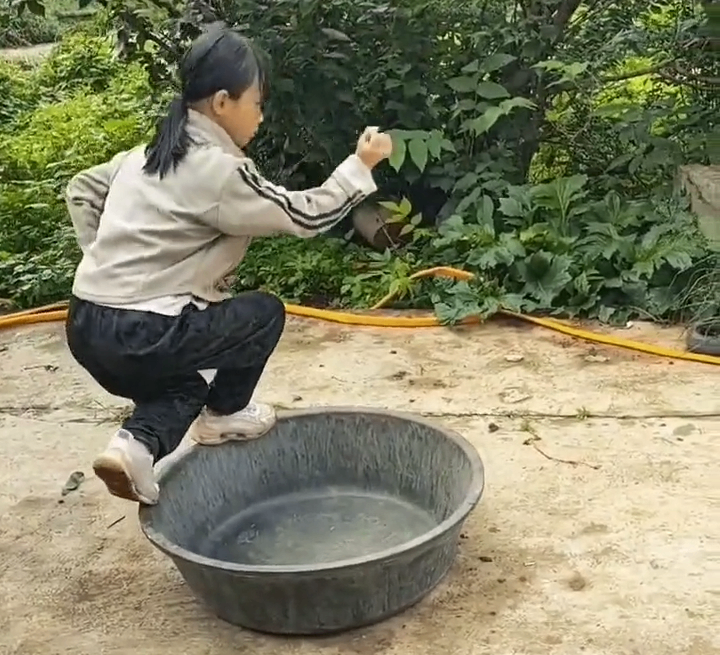
The "Jue" (绝) of Ziranmen: The Essence Lies in the Foundation
The passage mentions the "Jue " (绝) of Ziranmen. This Chinese character carries meanings of "unique," "peerless," "unparalleled," "cut off," or "the acme." In the context of Ziranmen, its "Jue" – its unique essence and peerless aspect – is precisely this unwavering focus on deep foundational internal cultivation through practices like Neiquanshou Zouquan .
"Zhi Wen Lianfa" (只问练法 - Only Ask About the Training Method): Ziranmen emphasizes how to train, not endlessly what techniques to use. It focuses relentlessly on the process of internal development – the "Lianfa." The belief is that by correctly cultivating the internal energy, structure, and awareness, the practical ability (Dafa - fighting method) emerges naturally as an expression of that cultivated power. You focus on developing the engine; the ability to drive comes intrinsically.
"Kaifa Qianneng" (开发潜能 - Develop Latent Potential): The rigorous internal training of Neiquanshou is designed to unlock the body and mind's innate, often dormant, potential. It accesses deep reserves of strength, speed, resilience, and sensory perception that conventional training often misses. It's about self-actualization through martial discipline.
"Bu Wen Dafa" (不问打法 - Don't Ask About Fighting Technique): This is the radical, defining characteristic. While Ziranmen undoubtedly has combat applications and techniques, they are not the starting point, nor the primary focus of early training. Spending years solely on foundational Qigong/Neigong while deliberately not learning specific fighting techniques sets Ziranmen apart. The mastery of Du Xinwu proves the efficacy: the fighting skill emerges as an inevitable consequence of correct and profound foundational practice. The "Dafa" is not taught as a separate catalogue; it is discovered within the practitioner as their internal power and awareness mature. "Gong Dao Ziran Cheng" – When the skill (Gong) arrives (Dao), success (Cheng) happens naturally (Ziran).
Neiquanshou: The Multi-Faceted Crucible
To understand Ziranmen's "Jue," we must appreciate the multifaceted nature of Neiquanshou:
The Ultimate Qigong/Neigong: It's a profound method for cultivating, circulating, and storing Qi (vital energy) and Jing (internal power/structure). It builds the internal "engine."
The Root of Qinggong (轻功 - Light Body Skill): The continuous low-stance walking, combined with Qi elevation techniques, develops the leg strength, tendon springiness, body alignment, and energetic lightness essential for agile footwork and swift movement. True Qinggong isn't magic; it's the product of intense internal conditioning like this.
The Foundation for Combat Sensitivity (Ting Jin 听劲): The heightened awareness cultivated – listening to one's own body, energy flow, and eventually extending that to feel an opponent's force and intention – is paramount for effortless self-defense. Neiquanshou is sensitivity training par excellence.
The Forge of Structure and Rooting: Maintaining perfect posture and alignment while moving continuously under tension builds an incredibly strong, connected, and deeply rooted structure. This is the foundation for absorbing and issuing power.
The Discipline of Mind and Spirit: The sheer duration and monotony demand and cultivate unwavering willpower (Zhi ), patience, perseverance, and mental calmness (Ding ) – essential warrior virtues.
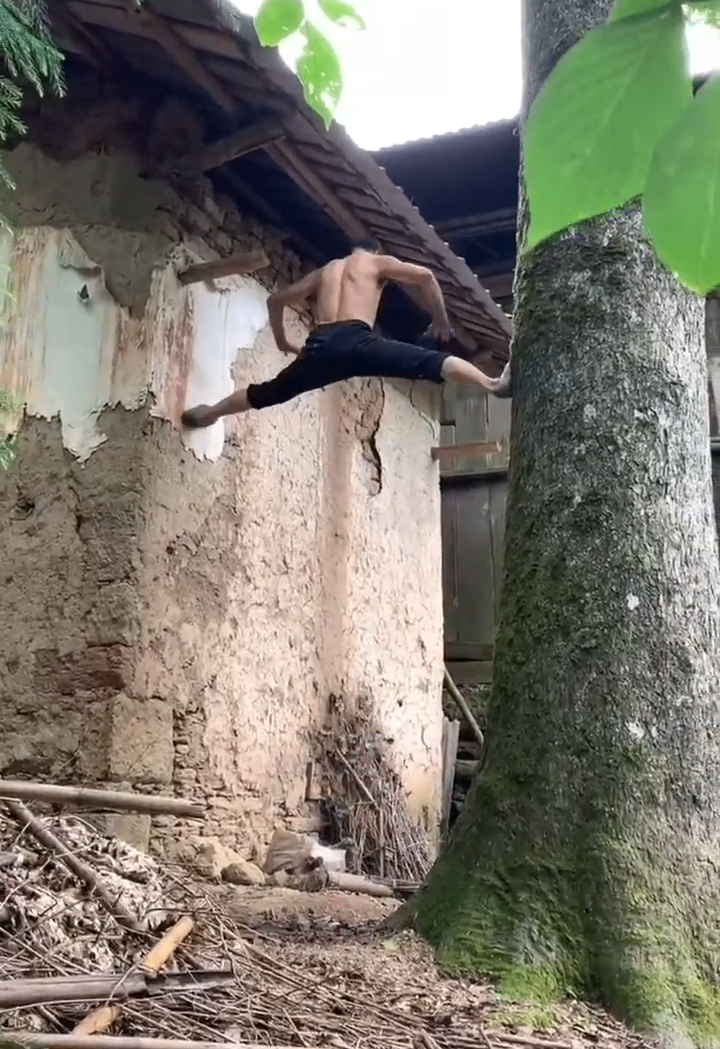
Ziranmen Today: Preserving the "Natural Way"
While Ziranmen remains less widespread globally than styles like Shaolin, Taijiquan, or Wing Chun, it is preserved and practiced by dedicated lineages stemming primarily from Du Xinwu and his disciples. Modern practitioners continue the tradition, emphasizing the deep internal work and the transformative power of foundational exercises like Neiquanshou Zouquan.
Learning authentic Ziranmen requires finding a qualified teacher from a recognized lineage. The training is demanding, requiring patience and a willingness to delve deep into internal cultivation before focusing on external applications. The rewards, however, are profound: not just self-defense skills, but enhanced vitality, mental clarity, deep relaxation, resilience, and a unique connection to a powerful and elegant martial tradition.
Conclusion: The Timeless Lesson of the Circle
The story of Ziranmen, Xu Aishi, and Du Xinwu offers a timeless lesson in martial arts mastery that transcends any single style. In an age obsessed with quick results and complex techniques, Ziranmen stands as a powerful testament to the unparalleled effectiveness of deep, focused, foundational practice . Du Xinwu's three years walking the circle were not wasted time; they were the essential alchemy that forged the "South-North Great Hero."
The "Jue" of Ziranmen – its unique, peerless essence – lies in its uncompromising focus on internal development, its belief that true martial power and effortless effectiveness (Ziran Fa ) arise naturally (Ziran Cheng ) from dedicated cultivation of the core essentials. It reminds us that sometimes, the most profound mastery comes not from accumulating endless techniques, but from walking the simple circle, deeply and truly, until the circle walks you, and the "Natural Way" becomes your way.
Keywords for SEO: Ziranmen Kung Fu, Natural Gate Kung Fu, Du Xinwu, Xu Aishi, Neiquanshou, Internal Circle Walking, Ziranmen circle walking, Qing Dynasty martial arts, Internal Kung Fu, Neigong, Qigong for martial arts, Chinese internal arts, South-North Great Hero, Effortless power martial arts, Gong Dao Zi Ran Cheng, Traditional Kung Fu training, Foundational Kung Fu exercises, Ting Jin sensitivity, Qinggong training, Du Xinwu bodyguard, Unique Kung Fu styles, Martial arts internal power, Developing latent potential martial arts, Chinese martial arts history, Daoist martial arts.

